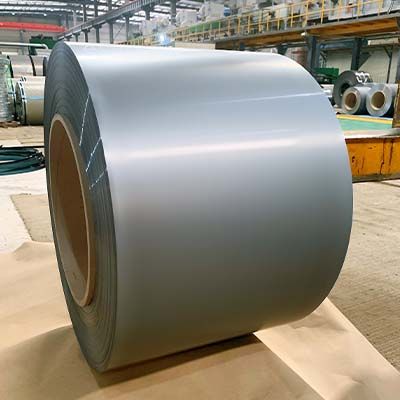In today's fast-paced technological world, the demand for energy-efficient and high-performance electrical devices continues to rise. This has led to significant advancements in the field of electrical engineering, including the development of oriented silicon steel.
What is Oriented Silicon Steel?
Oriented silicon steel, also known as electrical steel or transformer steel, is a special type of steel that is designed to exhibit low core loss and high magnetic permeability, making it ideal for electrical applications. It is produced by carefully controlling the grain structure of the steel during the manufacturing process, aligning the crystal grains in a specific direction to optimize its magnetic properties.
It is a kind of ferrosilicon soft magnetic alloy with very low carbon content, generally containing silicon content of 0.5 ~ 4.5%. The addition of silicon increases the resistivity and maximum permeability of iron and reduces the coercivity, core loss (iron loss), and magnetic aging.
History of Oriented Silicon Steel
The development of oriented silicon steel can be traced back to the early 20th century when engineers and scientists recognized the need for materials with improved magnetic properties for electrical devices. The first commercial production of oriented silicon steel began in the 1920s, and since then, it has undergone continuous refinement and improvement.
Manufacturing Process of Oriented Silicon Steel
The manufacturing process of oriented silicon steel involves several critical steps to achieve the desired grain structure and magnetic properties.
Steel Melting: The process begins with the melting of high-quality iron ore, along with controlled amounts of other elements, such as silicon and aluminum, in an electric arc furnace. This ensures the production of high-purity steel suitable for electrical applications.
Casting: The molten steel is cast into thin slabs using continuous casting techniques. This process helps maintain a uniform grain structure and minimizes the presence of impurities.
Hot Rolling: The slabs are heated and passed through a series of hot rolling mills, where they are gradually reduced in thickness to the desired dimensions. This hot rolling process helps align the crystal grains in the rolling direction.
Cold Rolling and Annealing: The hot-rolled steel is then cold rolled to reduce its thickness further and improve its magnetic properties. Subsequently, the material undergoes annealing, a heat treatment process that relieves internal stresses and further refines the grain structure.
Insulating Coating: In the final step, the oriented silicon steel is coated with an insulating layer to prevent the occurrence of short circuits between adjacent laminations.
Oriented Silicon Steel For Sale
Advantages of Oriented Silicon Steel
Oriented silicon steel offers several advantages, making it a preferred choice for various electrical applications.
Low Core Loss
One of the primary advantages of oriented silicon steel is its low core loss, which refers to the amount of energy lost as heat when an alternating magnetic field passes through the material. The low core loss property of oriented silicon steel reduces energy wastage, increasing efficiency and cost savings in electrical devices.
High Magnetic Permeability
Another key advantage of oriented silicon steel is its high magnetic permeability, allowing it to conduct magnetic flux efficiently. This property enables the design and construction of smaller, lighter electrical devices while maintaining high performance.
Reduced Eddy Current Losses
Eddy currents are circulating currents induced in conductive materials when exposed to a changing magnetic field. Oriented silicon steel minimizes eddy current losses by optimizing the grain structure, reducing energy wastage, and improving overall device efficiency.
Excellent Mechanical Strength
In addition to its magnetic properties, oriented silicon steel exhibits excellent mechanical strength. This makes it highly durable and capable of withstanding the mechanical stresses encountered during the manufacturing and operation of electrical devices.
Key Factors Affecting the Performance of Oriented Silicon Steel
Several factors influence the performance and selection of oriented silicon steel for specific applications.
Silicon Content: The silicon content in oriented silicon steel significantly affects its magnetic properties - higher silicon content results in increased magnetic permeability and reduced core loss.
Grain Orientation: The grain orientation in oriented silicon steel determines its magnetic properties. Proper control of the grain structure during manufacturing ensures optimal performance.
Thickness: The thickness of the oriented silicon steel impacts its magnetic properties and mechanical strength. Thinner laminations reduce core loss and improve efficiency.
Coating Quality: The quality and effectiveness of the insulating coating applied to oriented silicon steel directly impact its performance and reliability.
Cost Considerations: While oriented silicon steel offers superior performance, cost considerations may influence its selection for specific applications. Balancing performance requirements with cost constraints is essential.
Conclusion
Oriented silicon steel has revolutionized the electrical industry with its exceptional magnetic properties, contributing to energy efficiency and improved performance. Its low core loss, high magnetic permeability, and reduced eddy current losses make it a sought-after material for power transformers, electric motors, inductors, generators, magnetic sensors, and so on.






